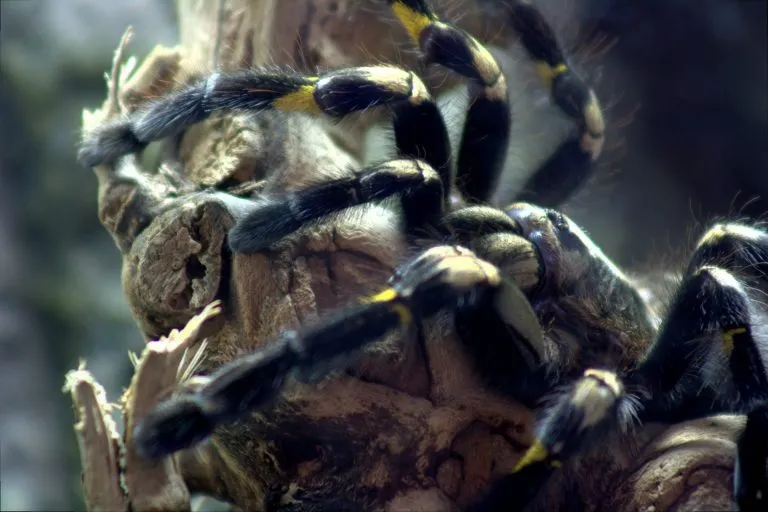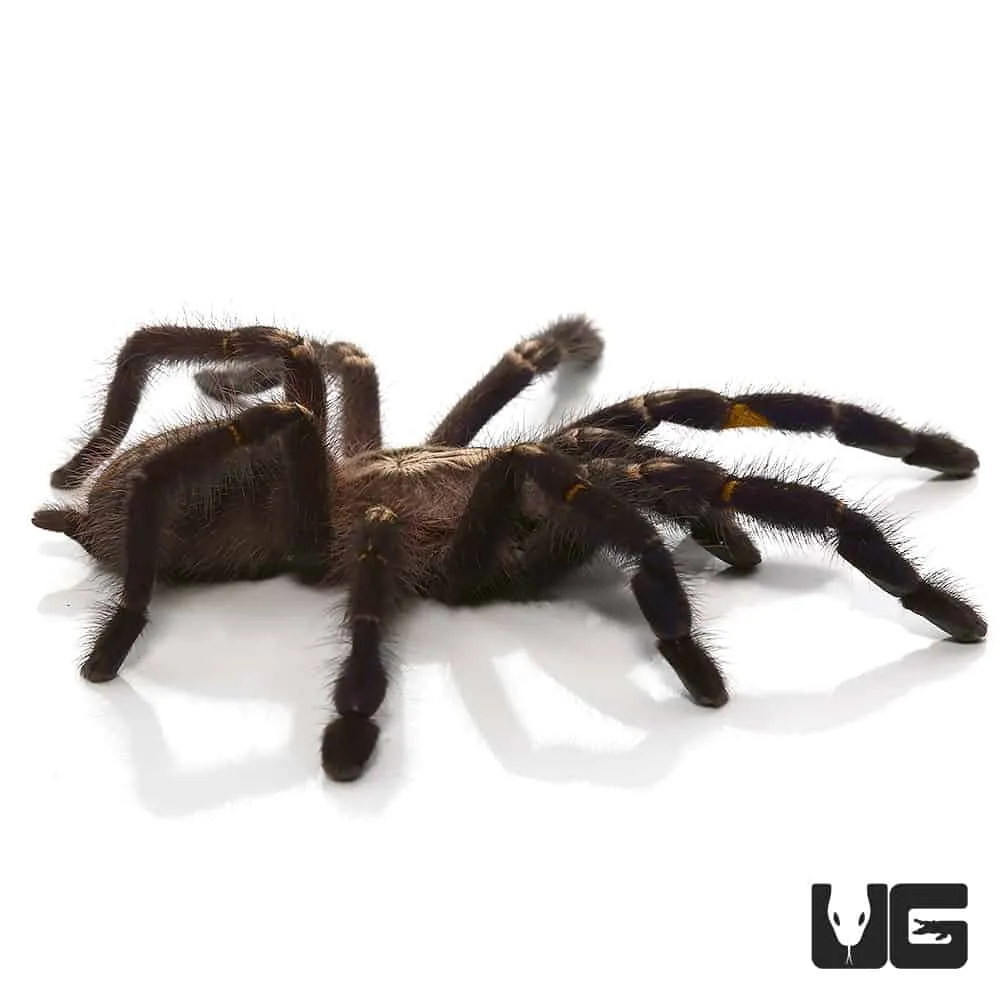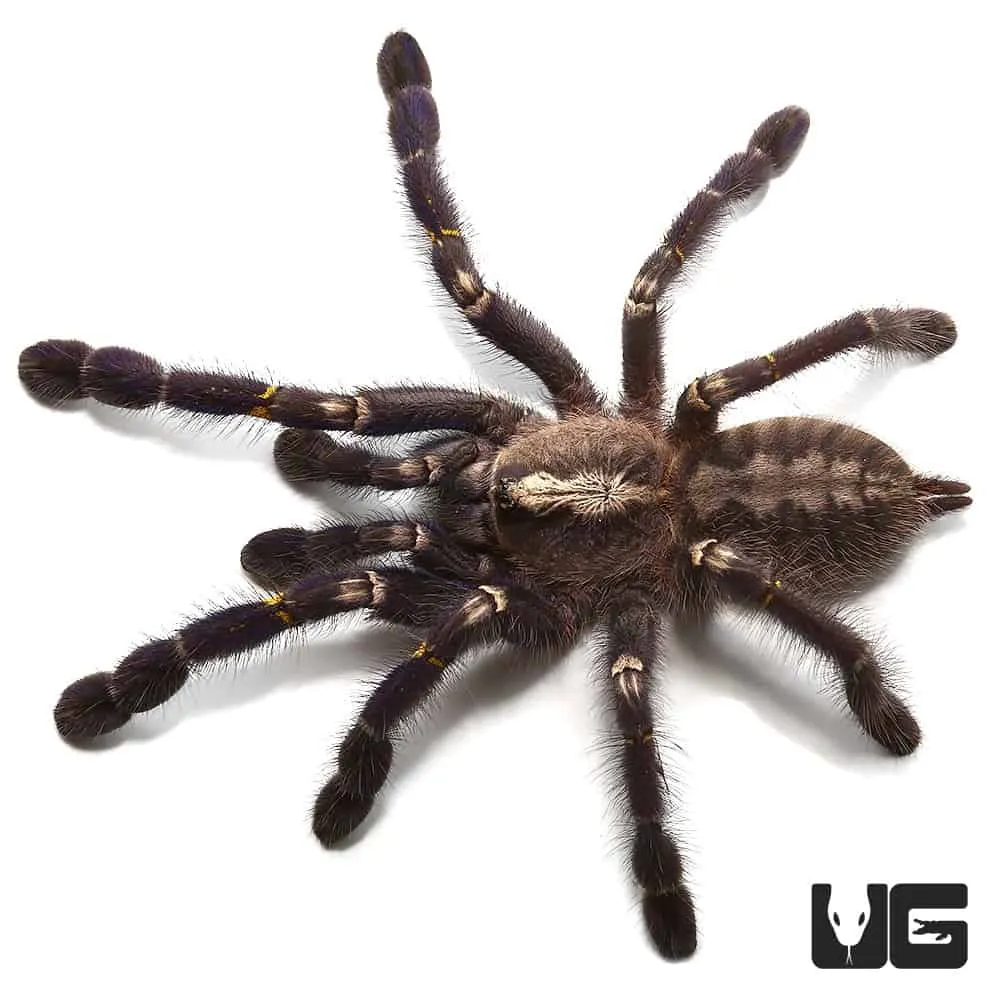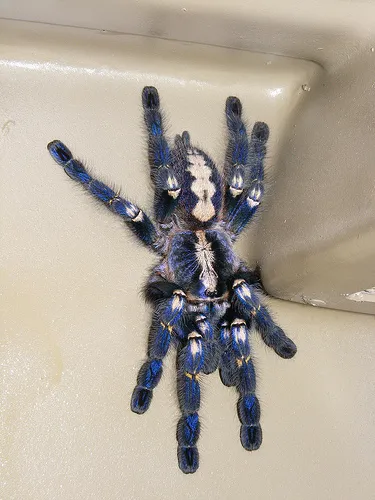The Gooty Sapphire Tarantula, scientifically known as Poecilotheria metallica, is a stunning arachnid, captivating enthusiasts with its vibrant blue and metallic appearance. This article unveils five amazing facts about this remarkable creature, offering insights into its unique characteristics, habitat, and conservation status. From its striking coloration to its critically endangered status, discover what makes the Gooty Sapphire Tarantula a fascinating subject of study and admiration. Get ready to explore the world of one of the most beautiful and intriguing tarantula species, and understand why their conservation is so crucial. The more we understand about this creature, the better we can protect it for future generations, ensuring that the world can admire this spectacular spider for years to come. This guide aims to provide an in-depth understanding of the Gooty Sapphire Tarantula.
Amazing Fact 1 The Exquisite Blue Hue
One of the most striking features of the Gooty Sapphire Tarantula is its vibrant blue coloration. This coloration isn’t merely a shade but a complex interplay of structural color, where the arrangement of microscopic structures on the tarantula’s body refracts light. This results in the stunning metallic blue hue that gives the spider its name. This vivid coloration serves multiple purposes, including camouflage within its arboreal habitat and potentially attracting mates. The intensity and distribution of the blue can vary slightly between individuals, adding to the uniqueness of each tarantula. Observing these beautiful colors firsthand leaves a lasting impression, demonstrating the beauty of natural adaptation and evolution.
Where Does the Blue Color Come From
The blue color of the Gooty Sapphire Tarantula doesn’t come from pigments, like the green in leaves, but from a physical phenomenon called structural coloration. Tiny structures within the tarantula’s hairs and exoskeleton scatter and refract light in a way that creates the blue appearance. These structures are arranged in a specific manner, creating an effect similar to how a prism splits white light into different colors. The exact arrangement of these structures can vary slightly, leading to subtle differences in the shade of blue observed on different tarantulas. This amazing adaptation allows the tarantula to blend in with its surroundings, providing camouflage and protection from predators. The intricate details are best observed with a microscope, where the complexity of nature’s design becomes truly apparent. This phenomenon shows how structural colors work in the animal kingdom.
Amazing Fact 2 Critically Endangered Status

Unfortunately, the Gooty Sapphire Tarantula is listed as critically endangered. This alarming status is due to a combination of factors, including habitat loss, illegal pet trade, and climate change. The species is native to a very specific and limited area in India, making it highly vulnerable to any environmental disturbances. The loss of its natural habitat due to deforestation and agricultural expansion is a major threat, reducing the available space for the tarantulas to live and reproduce. Conservation efforts are now crucial to protect and grow the population of this beautiful tarantula. Understanding the threats facing this species is the first step toward implementing effective conservation strategies. By working together, we can help ensure the Gooty Sapphire Tarantula thrives in its natural environment.
What Threats Are Affecting This Species
The primary threats affecting the Gooty Sapphire Tarantula include deforestation, which destroys their forest habitat, and the illegal pet trade, which captures them for sale. Climate change also poses a significant risk, as it can alter the conditions of their habitat, making it less suitable for their survival. In the illegal pet trade, many tarantulas die before they even reach their destination, leading to a significant decline in their population. Additionally, the introduction of invasive species can disrupt the ecosystem and affect the tarantulas’ food sources. Conservation efforts are thus essential, focusing on protecting the remaining habitat, combating illegal trade, and raising awareness about the importance of preserving this unique species. Only through collaborative efforts can we hope to reverse this devastating trend.
Amazing Fact 3 The Arboreal Lifestyle
Unlike many tarantula species that live on the ground, the Gooty Sapphire Tarantula is arboreal, meaning it spends most of its life in trees. This lifestyle influences its physical characteristics and behavior. They have developed strong claws and specialized pads on their feet to grip tree bark and navigate their arboreal environment. They build their webs in the crevices of trees, using silk to create a secure home and trap prey. This arboreal adaptation allows them to avoid ground predators and take advantage of different food sources. The Gooty Sapphire Tarantula’s arboreal lifestyle is a unique aspect of its biology and survival. By understanding their habitat and adaptations, we gain valuable insights into their lifestyle and challenges.
How Does Their Habitat Affect Their Lifestyle

The habitat of the Gooty Sapphire Tarantula, which is typically a specific region within India, plays a crucial role in shaping its lifestyle. The humid environment and the presence of large trees provide the ideal conditions for the tarantulas to thrive. These conditions influence their behavior, feeding habits, and reproductive cycles. Their arboreal lifestyle is a direct result of the habitat, as they seek shelter and build their webs within the trees. They feed on insects and other small creatures found in the forest, using their venom to immobilize their prey. Climate change, habitat destruction, and human encroachment threaten their habitat. That is why it is so important to preserve these specific forests to safeguard their survival.
Amazing Fact 4 The Venomous Bite
Like all tarantulas, the Gooty Sapphire Tarantula possesses venom, which it uses to subdue prey. The venom is delivered through fangs and contains a complex mixture of toxins that can paralyze or kill smaller animals. While the bite of a Gooty Sapphire Tarantula can be painful to humans, it is generally not considered life-threatening. The symptoms may include localized pain, swelling, and muscle cramps. However, it is always essential to exercise caution when handling these spiders and avoid direct contact. It’s important to remember that these creatures are not aggressive, but will defend themselves when threatened. The venom itself is a complex biological tool, a subject of interest in medical research for the potential development of new drugs.
How Dangerous is their Venom
The venom of the Gooty Sapphire Tarantula is not considered medically significant to humans, unlike some other venomous creatures. While a bite can be painful and cause localized symptoms such as pain, swelling, and muscle cramps, severe systemic reactions are rare. The primary risk is the potential for an allergic reaction in sensitive individuals. However, it’s important to note that these spiders are generally not aggressive and will only bite if they feel threatened or provoked. Therefore, caution and respect for their space are crucial when interacting with them. Medical attention should be sought if symptoms worsen or persist. Research into tarantula venom continues, with potential applications in medicine, so studying this venom’s properties is important.
Amazing Fact 5 Lifespan of the Gooty Sapphire Tarantula

The Gooty Sapphire Tarantula has a relatively long lifespan compared to many other spider species. Females can live for up to 12 years or more under ideal conditions. Males, however, typically have a much shorter lifespan, often living only a few years after reaching maturity. Factors such as diet, environmental conditions, and overall health play a significant role in determining their lifespan. Captive-bred tarantulas tend to live longer due to stable environments and regular access to food and water. Understanding the lifespan of these creatures is important for responsible pet ownership and conservation efforts.
Factors That Influence Lifespan
Several factors can influence the lifespan of the Gooty Sapphire Tarantula. Diet is critical, as a balanced and nutritious diet helps the tarantulas thrive. Environmental conditions, such as temperature, humidity, and the availability of shelter, are also essential. Stable and consistent environmental conditions in captivity can contribute to longer lifespans. In the wild, the threats like predation, habitat loss, and competition for resources can reduce the lifespan. Responsible pet ownership, including providing a proper habitat and diet, can maximize their longevity. Keeping the Gooty Sapphire Tarantula in optimal conditions is vital for its health and longevity.
In conclusion, the Gooty Sapphire Tarantula is a remarkable creature with many fascinating characteristics. From its vibrant blue coloration to its arboreal lifestyle and endangered status, there is much to admire and learn. By understanding the threats facing this species and supporting conservation efforts, we can help ensure that future generations have the opportunity to appreciate its beauty and unique place in the natural world. Further research and conservation actions are vital to protecting this wonderful species and its habitat. Let’s strive to protect the Gooty Sapphire Tarantula.
